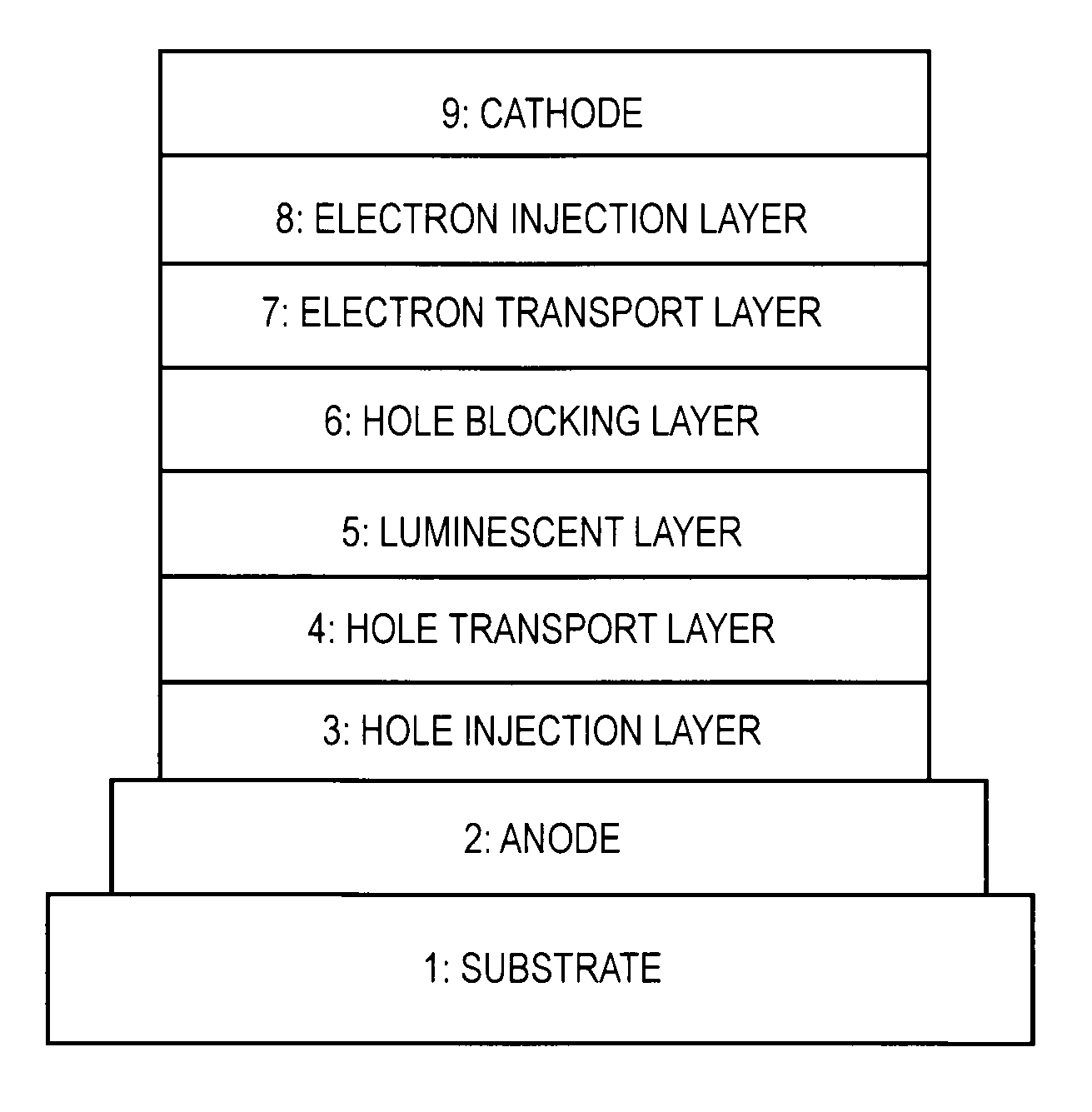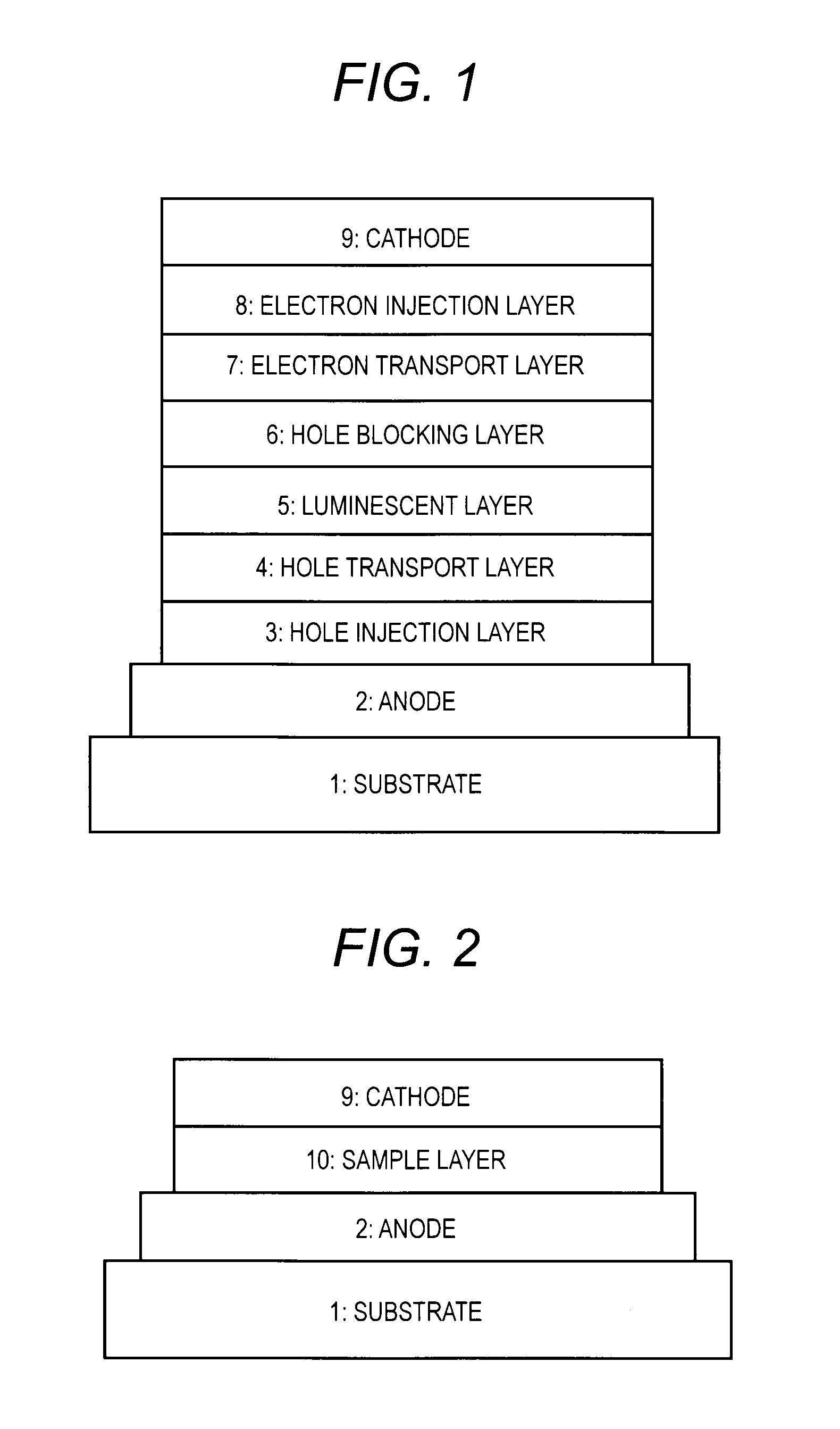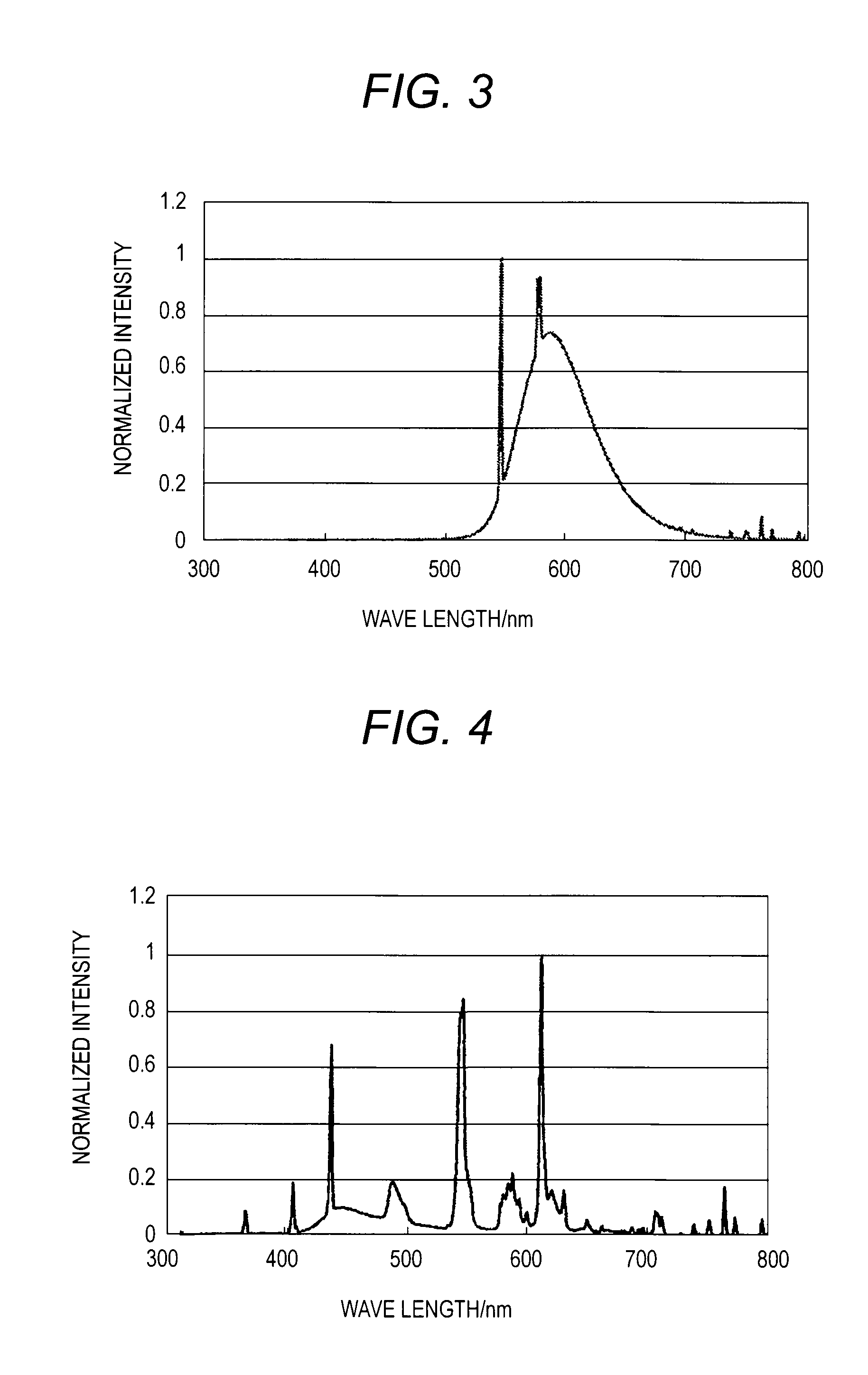Process for producing organic electroluminescence element, organic electroluminescence element, organic el display, and organic el lighting
- Summary
- Abstract
- Description
- Claims
- Application Information
AI Technical Summary
Benefits of technology
Problems solved by technology
Method used
Image
Examples
reference example 1
[0272]An element for dielectric constant measurement which had the structure shown in FIG. 2 was produced. A substrate constituted of a glass substrate and, formed thereon, a transparent conductive film of indium-tin oxide (ITO) deposited in a thickness of 70 nm (deposited by sputtering; manufactured by Sanyo Vacuum Industries Co., Ltd.) was subjected to processing by an ordinary technique of photolithography and etching with hydrochloric acid to pattern the transparent conductive film into stripes having a width of 2 mm. Thus, an anode 2 was formed. The ITO substrate which had undergone the patterning was cleaned by subjecting the substrate to ultrasonic cleaning with an aqueous surfactant solution, rinsing with ultrapure water, ultrasonic cleaning with ultrapure water, and rinsing with ultrapure water in this order, subsequently dried with compressed air, and finally subjected to ultraviolet / ozone cleaning. This ITO functions as an electrode.
[0273]A coating fluid containing compou...
reference example 2
[0286]An element for dielectric constant measurement was produced in the same manner as in Reference Example 1, except that a sample layer 10 was formed in an environment having the spectrum shown in FIG. 4.
[0287]The values of dielectric constant obtained are shown in Table 1.
reference example 3
[0288]An element for dielectric constant measurement was produced in the same manner as in Reference Example 1, except that a sample layer 10 having a thickness of 232 nm was formed by preparing a coating fluid containing compound (C3) and arylamine compound (D2) respectively represented by the following structural formulae and subjecting the coating fluid to application by spin coating and heating in an environment having the spectrum shown in FIG. 3.
[0290]Coating fluid concentrations[0291]C3: 3.0 wt %[0292]D2: 0.3 wt %
10>
[0293]
Spinner rotation speed500 rpmSpinner rotation period 30 secSpin coating atmospherein nitrogenHeating conditions130° C.; 1 hr; in nitrogen
[0294]The values of dielectric constant obtained are shown in Table 1.
PUM
| Property | Measurement | Unit |
|---|---|---|
| Wavelength | aaaaa | aaaaa |
| Temperature | aaaaa | aaaaa |
| Length | aaaaa | aaaaa |
Abstract
Description
Claims
Application Information
 Login to View More
Login to View More - R&D
- Intellectual Property
- Life Sciences
- Materials
- Tech Scout
- Unparalleled Data Quality
- Higher Quality Content
- 60% Fewer Hallucinations
Browse by: Latest US Patents, China's latest patents, Technical Efficacy Thesaurus, Application Domain, Technology Topic, Popular Technical Reports.
© 2025 PatSnap. All rights reserved.Legal|Privacy policy|Modern Slavery Act Transparency Statement|Sitemap|About US| Contact US: help@patsnap.com



